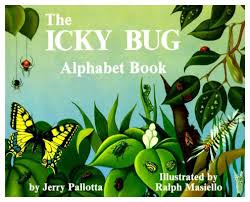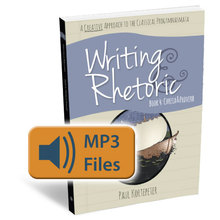A one-semester course for grades 3 or 4 and up
A Creative Approach to the Classical Progymnasmata—Think of the progymnasmata as a step-by-step apprenticeship in the art of writing and rhetoric. What is an apprentice? It is a young person who is learning a skill from a master teacher. Our students will serve as apprentices to the great writers and great stories of history.
Students are often expected to write with no clear model before them. Modern composition scolds traditional writing instruction as rote and unimaginative. It takes imitation to task for a lack of freedom and personal expression. And yet, effective communication from writer to reader always requires some sort of form and structure. Many of history’s greatest writers learned by imitation. In other words, writing takes the same kind of determined study as ballet or diving. Creativity uses conventional form as a stage or a springboard from which to launch grand jetés and somersaults. Too often students are expected to tackle complex writing assignments without learning the necessary intermediate steps. The assumption is that because most everyone can speak English well enough to be understood, and form letters with a pencil, that everyone should be able to write well. Yet how many of us would expect a child to sit at a piano, without piano lessons, and play a concerto? Writing is never automatic.
The Writing & Rhetoric series method employs fluent reading, careful listening, models for imitation, and progressive steps. It assumes that students learn best by reading excellent, whole-story examples of literature and by growing their skills through imitation. Each exercise is intended to impart a skill (or tool) that can be employed in all kinds of writing and speaking. The exercises are arranged from simple to more complex. What’s more, the exercises are cumulative, meaning that later exercises incorporate the skills acquired in preceding exercises. This series is a step-by-step apprenticeship in the art of writing and rhetoric.
•Writing & Rhetoric Book 3: Narrative II Student Edition exposes students to new genres of story, including historical narrative and legend. It includes a variety of culturally important examples. All of the skills practiced in Narrative I are extended and new skill sets are introduced, including identifying the difference between fact and opinion and learning to ask the five Ws of a historical narrative: who, what, when, where, why.
Lessons include:
◦How to define and identify types of narrative
◦How to outline stories
◦How to get a story off the ground
◦How the protagonist and antagonist develop the central story conflict
◦How to discern the difference between fact and opion in historical narrative and legend
◦How to identify the Five W’s of an historical narrative—who, what, when, where, why
◦How to summarize a longer narrative in writing
◦Rewriting: what happens when you change the point ofview and the protagonist
◦How to appy storytelling skills
◦Elocution skills and oration







Reviews
There are no reviews yet.